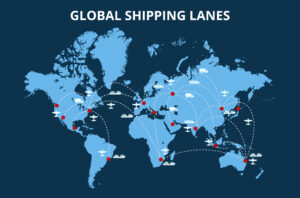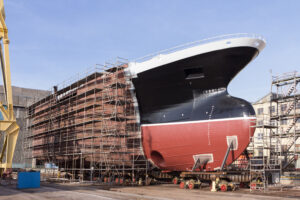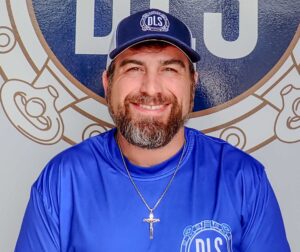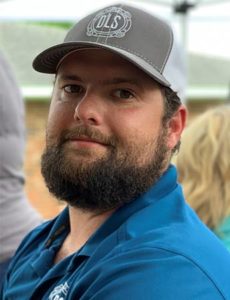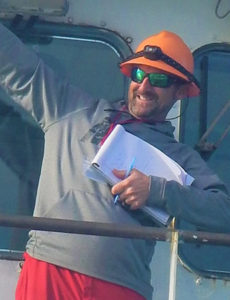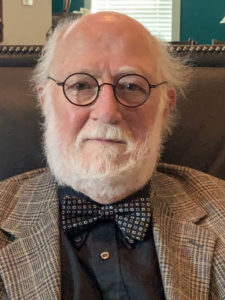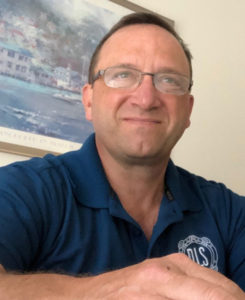- March 4, 2023
- Industry, Marine News
- Skinning A Cat Part 2
“Appraisal is not just about data, or the amount of data available, it’s the appraiser’s proper interpretation of what is available that produces a good opinion of value.”
Unknown source
Weather Route Planning
Weather routing has been around for hundreds of years, hence the trade winds. With the addition of full coverage satellites, weather buoys and extensive international cooperation, the use and accuracy of forecasts have become common.
Pre-sailing plans establish a course and timeline while weather reports help avoid storms that could not only delay the ship but also damage cargo or the ship itself. This is currently of importance in the routing of container ships to help them avoid weather conditions, including sea states that could cause heavy rolling which has caused the loss of deck loaded containers and extremely high insurance claims, and subsequent pollution.
Ironically, now we are watching the weather not only to avoid it, but also to use wind and current to assist during a ship’s passage, thereby reducing fuel use and its associated pollution. This will be of importance to all owner/operators looking for an easy way to improve their CII figures but is especially relevant to ships with wind assist.
Optimized Hull, Rudder, and Propellor Shape
These are generally items that are considered in new construction. However, it is possible to retrofit higher efficiency propellors and some alternative propeller/rudder/duct designs with the goal to reduce drag and increase efficiency.
There will be many variations on hull shape depending on the vessel type, size, and service. This is a balance between reducing drag while maintaining cargo capacity. There will also be variations in propellors. Basic high efficiency designs will be custom fitted depending on the shape of the hull and its service. The goal will be clear water flow to the propellor and high efficiency at desired RPM and speed, all with reduced cavitation.
There are several systems in use. Kongsberg has designed a rudder system where rudder forces are transferred from the rudder system to the vessel’s hull. This load distribution allows for slimmer and possibly full spade rudders with smaller rudder gear, reducing weight and drag and allowing some possible increase in cargo capacity.
The Becker Mewis Duct has been around for about a decade. It is a kort type nozzle attached to the hull forward of the propellor which collects and directs the ship’s wake into the propellor. Additionally, fins in the duct produce some water swirl making the propellor action more efficient. This system’s additional cost may be justified because under the new rules, its efficiency, reported to be 3 to 8% depending on the vessel, may offset the installation costs.
A third system uses a small Becker type duct feeding water into a controllable pitch skewed propellor with the propellor tail shaft continued aft to fuse with the rudder stock. This apparently keeps the water flow smoother preventing turbulence and drag.
Hull Vanes and Fins
Hull vanes, in laymen’s terms, are like trim tabs on power boats. They are located at the stern and affixed to the hull. The standard design is of port and starboard struts holding a transverse horizontal fin, often having a slight or pronounced aircraft wing shape. Like a wing, it produces lift which decreases drag and wake. The flat aft plane also reduces pitching. If it is a controllable wing or a wing with tabs, it can be adjusted not just for lift and to reduced drag but also to change trim, like on power boats, to improve sea keeping or efficiency. For now, this is seen on small and large yachts and commercial vessels up to about 60 meters (200’) but variations are being studied for larger ships. Fuel efficiency is said to be 5 to 25% depending on the vessel.
Fins can be fixed or controllable. The simplest, but least effective, is the bilge keel. The most complex, expensive, and effective are computerized fins that are found on passenger vessels. These fins are being researched for use on selected commercial vessels to see if their cost and drag, when deployed, can be justified by better and more efficient movement through heavier seas.
Reduction of Drag and Biofouling
Many new and very expensive hull coatings have been developed over the last few decades, originally for military use. With the incentive of CII compliance, they are now attractive for commercial applications as well. These coatings must work to reduce drag, fight off biofouling, endure between drydocking periods, and be safe for marine life. As biofouling regulations have come into effect around the world, they are also important to retard bottom growth and to allow easy hull cleaning. Some proprietary coatings, as made by Kotun, are also made to work with Kotun’s robotic hull cleaning systems. Other hull paint manufacturers have done the same, and there are robotic and semi-robotic hull cleaning facilities throughout the world.
Another system for reducing drag is the Air Lubrication System. For a low power draw, air bubbles are jetted out of the bottom of a ship’s hull which reduces drag a bit like the bubbles being “marbles”. One test reported fuel savings of 35%, but this system seems to be of limited use. It can only be used on commercial ships with flat bottoms which help contain the bubbles under the hull. Then there are further complications. The bubbles should all be of the same size to provide stable lubrication. Variations cause the ship to be somewhat difficult to handle. As the bubble trail extends aft, it goes through the propellor reducing clear water thrust. It helps to have a bottom fitted with “borders” of some sort that will keep the bubbles under the hull where they are most efficient, but then again, added appendages can add drag.
Propulsion Drive Train Improvements – Power Takeoffs; Waste Heat Recovery, etc.
Propulsion drive train improvements are intended to make better and more efficient secondary use of the fuel consumed by the machinery.
Main and auxiliary engine designs are in constant change as R&D develops more efficient fuel delivery designs with less wasted exhaust. These developments also go into all pumps and drives off main and auxiliary engines so that the engines do not have to work as hard, i.e., burn more fuel, driving auxiliaries. The desired route is via more efficient mechanical or electrical connections. The byproducts of the engines, exhaust gasses, heat, cooling water, are now subject to be doing some work themselves instead of being sent into the air or water. This is an ongoing project with many manufacturers involved in R&D.
Onboard Computerized Systems Management/Port Efficiency
This may be one of the most interesting and most important advances. It can probably be entered under Artificial Intelligence (AI). The point is to interconnect all systems both aboard and ashore to have computerized AI overseeing a vessel’s functions. Propulsion and mechanical systems will be tied in with navigation systems, with the overall system tracking the efficiency of the ship at any moment. AI systems will notify the crew and the office/charterer and eventually with autonomous vessels, the system would be notifying the operator. Any changes in the system that would increase efficiency from moment to moment could be done by the crew or automatically by the AI system. A system undergoing trial was used on a PSV transiting from Australia to Norway. Its constant readout of systems along with the crew making suitable adjustments to main engines, auxiliaries, speed, course, etc., reduced overall fuel consumption to just under 30% of the normal fuel burn on such a voyage.
Simple versions of AI controlled systems have been around for a while. Diesel engines on ships as well as complete systems in newer cars can report their conditions to central locations. The readings on ships can be used for Just-In-Time (JIT) maintenance programs and to avoid unexpected down time or premature drydocking or engine overhauls. Class societies are looking into these reading systems to see if JIT notifications will be acceptable to replace the repeated interim special survey boardings.
This is not just for the vessel’s maintenance, as charterers, operators, and ports would like to be in a system where port time could be scheduled to avoid downtime. As it is, vessels proceed at sea speed to find they have arrived early and must sit at anchor for days. This wastes fuel, time, and possibly incur demurrage charges. Working out an acceptable system will be a problem with the ports as first-come, first-served, or a triage system would be hard to enforce. All owners and charterers want to be first in and out.
All parties want to cooperate as it is in their interest to have high CII ratings. However, this does not mean they want to share trade data with competitors. There is some discussion of creating a central body that would take data from all the ships of all the participants, put the data together in a useable form without compromising the data sources, and then giving it back to the operators to help them adjust their ships and/or operations to meet GHG deadlines.
What does this future mean to the marine surveyor, appraiser, or lender?
Since before WWII, the shipping industry has been a laggard in technology. Besides the jump in ship sizes, the major changes up until 2010 have been diesel engines and containerization. Ships have always been valued based on the money they could make. One needed to know the ship’s design/service, its age, and its deadweight. With smaller vessels, like tugs, horsepower was a significant metric as well. There were usually some sales of similar vessels for comparable sales data or ongoing new construction information for conducting a valuation using the cost approach. Also, conducting the income approach would require multi-year performance data. In the past twenty years, there has been a proliferation of vessel types, such as the oilfield service vessels, offshore construction vessels, and bulk and tank ships for specific cargoes. While the metrics required for a valuation used to be straightforward, this is no longer the case.
The aforementioned technological options are not comprehensive of all changes the industry has introduced as a result of regulations intended to slow and subsequently reduce global warming- leading to new questions concerning the valuation of these assets.
It is safe to assume vessels will soon utilize multiple methods to drive efficiency. How does one calculate the technological efficiency or lack thereof towards value? Presently, there is no public data or confirmed details on these new systems, particularly how they apply to a specific type of vessel. Plus, any data gleaned will vary for identical vessels operating on different trade routes.
For comparable sales purposes, how can one actually compare vessel sales when you may have five sales of a “comparable” ship type, but they are all differently equipped with varied fuel efficiency systems and may have been operated in different trades on different routes, all factors than can affect a CII rating? How niche will a buyer become for such specific variations on vessels?
A marine surveyor is a professional with hands on experience and an ongoing education surrounding new vessel construction and all associated marine systems. Further learning comes from being aboard vessels alongside manufacturers’ representatives, owners, port captains, and port engineers. These opportunities are essentially one-on-one classes on new technology. The problem is, while onboard inspections can be thorough and satisfy scope of work needs to know the assets outfitting and condition, how can that known information be transformed into an opinion of value?
For now, there is a shortage of reliable data available. The efficiencies noted are usually from a vessel owner or equipment manufacturer or association, and very often based on the performance of a single ship or limited number of voyages. As mentioned in the start of part one of this blog, official statistics will be gathered by vessel owners as per IMO MARPOL 2018 rules. All of the rules would apply to all ships over 400 GT except for CII which applies to ships over 5000 GT.
The Energy Efficiency Design Index (EEDI) created in 2011 is the starting point for how data regarding emissions efficiency will be measured and collected. The EEDI was a minimum energy efficiency target for new construction vessels as of 2013. It was calculated for each type and size ship. The minimum would be raised every five years to decrease GHG emissions. This is the baseline. One catch to keep in mind is that ships built in 2015 and later were built to the required ECO level. Reaching a desired 2024 CII may not be a stretch. Ships older than ten years were probably not built with GHG emissions in mind so they may have a long and expensive road to reach an A, B, or C rating.
For the ship’s Ship Energy Efficiency Management Plan (SEEMP) to work, each ship must have an Energy Efficiency Existing Ship Index (EEXI) which is its present calculated efficiency which should be a reduction target based on its EEDI as of January 1, 2023. Now, ships must maintain records of fuel burn, distances traveled, and other statistics to offer for the Carbon Intensity Indicator (CII) calculation. Their current CII is then compared to their target CII, which is set by the EEDI baseline and their EESI. This produces a letter rating which may or may not be an anchor for marketability and therefore value.
One major problem is that much of the industry is not happy with the CII formula. At its simplest, CCI is calculated from the amount of fuel burned for the number of nautical miles traveled and the cargo tonnage carried (tonne miles). Those who have been to sea can already see the difficulties in collecting this data. The reason some of the industry is not happy with the CII calculation is that it generally favors newer and larger ships that transit long routes. While large ships burn more fuel, it is covered by the increased cargo capacity and efficiency, particularly with large container ships that spend comparatively little time in port compared to their cargo tonnage.
As for the cargo tonnage, the formula uses Deadweight Tonnage (DWT) not actual cargo carried. Vessels that spend longer times in port, like bulk carriers at anchor awaiting a berth, are burning fuel with no miles to offset this reality within the CII calculation. This also applies to vessels that have routes in areas with adverse weather that delays them as they burn fuel pushing against heavy seas. Much of this is controlled by the time charters, not the vessel owners that need the good rating. If an owner operates a ship to maintain a good CII rating, like slow streaming or weather routing, it may be a breach of the charter party.
As you can see, improving CII is an important reason for the desirability of weather routing and efficiency among all parties to reduce port times. So why did the IMO pass this flawed process? Because they had enough votes to pass such a broad ruling. Many owners did not want to make a more detailed rule as they didn’t want to reveal their actual tonnage carried and other details of their voyages that would help their competitor. For now, this is the rule that all will be living with until it is revisited in 2025.
For the next five or more years, appraisers may soon have questionable or somewhat nebulous data to work from when valuing marine assets with new technology. Certainly, the ship brokers will be mining what they can with their statistics people hard at work to produce their Certificates of Value. VesselsValue will be working on interesting algorithms to cover this new world of value. Also, those who produce USPAP and International Appraisals Standards reports may be using a lot of extraordinary assumptions or hypothetical conditions in their reports.
It is a known fact that data is the most valuable asset in today’s world. It will now be organizations with trained staff and modern IT systems who will be able to collect and put collected pertinent ship data into easy useable format.
We are incredibly fortunate at DLS Marine that we have the experienced staff and resources to continue to learn and evolve with our industry. We are excited to watch technology progress as we collect data to help support our opinions of value.
I believe data is our most valuable asset.
-Norman Laskay
If you’d like to keep this conversation going, please email me at nlaskay@DLSmarine.com


